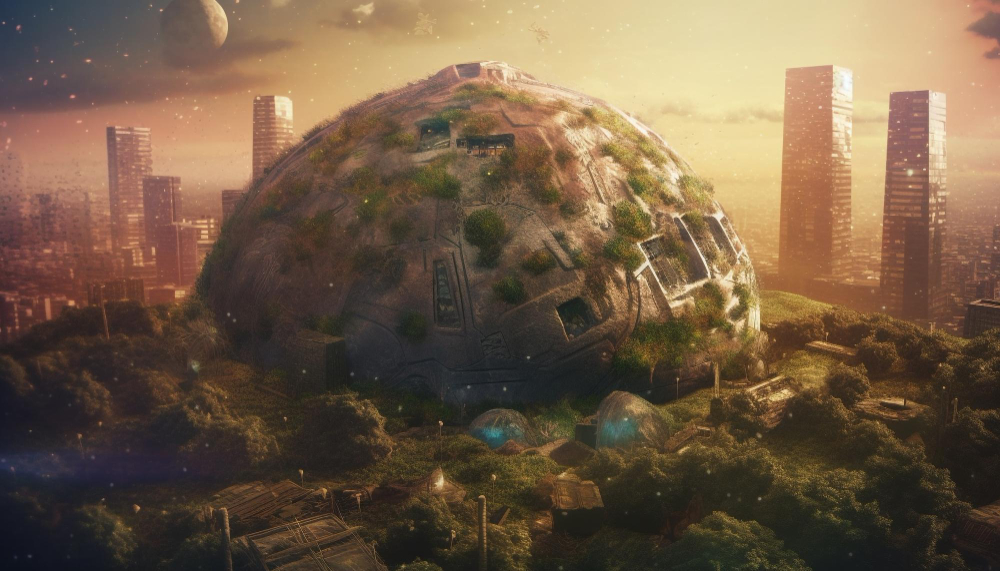The Biosphere 2 Project
An Ambitious Space Colonization Experiment on Earth
The Biosphere 2 Project, initiated by Edward Bass in 1984, was a pioneering experiment that sought to replicate the conditions of a space colony on our own planet. With an initial investment of $30 million that eventually increased to $150 million, this project aimed to develop the technology necessary for the future colonization of space. Through the creation of an airtight environment that mimicked various terrestrial ecosystems, the aim was to study the interaction between the elements of the site, the sustenance of isolated natural life and the ability of humans to become self-sufficient.
The main structure of Biosphere 2 was an impressive steel and glass dome built on a 10-square-kilometer ranch in the Santa Catalina Mountains in Oracle, Arizona. This dome undoubtedly presented significant challenges during its construction, as it had to be airtight and able to handle atmospheric pressure. An ingenious system was implemented that allowed the expansion and contraction of the dome to avoid damage caused by temperature changes. The interior of Biosphere 2 was divided into several habitats, each designed to reproduce different terrestrial ecosystems, such as jungle, ocean, desert, mangroves and a savannah.
In September 1991, eight carefully selected colonists entered the dome and closed the door behind them, pledging to remain there for two years. Although the project achieved some notable successes in growing food and experimenting with air and water chemistry, it encountered a number of formidable challenges. The persistent feeling of hunger, the drastic decrease in oxygen levels and isolation contributed to conflicts among the colonizers, which came to a head with physical confrontations that affected the stability of the internal ecosystems.
The failure of Biosphere 2 was attributed to lack of oxygen, problems in food cultivation and social conflicts among the colonists. Despite some notable advances, such as waste recycling and the successful cultivation of certain foods, the fundamental problems proved insurmountable. The internal ecosystems collapsed, and the colonists emerged after two years with weight loss, acidic and uninhabitable waters, and significant environmental problems.
Despite the obvious failure, Biosphere 2 was not in vain. The structure is currently being used by the University of Arizona to study environmental changes and the consequences of global warming. This positive spin highlights the ability to learn and adapt, even in projects that initially fail to meet their objectives. However, the legacy of Biosphere 2 also leaves important lessons about the challenges of living in closed environments and the complexity of creating self-sufficient space colonies.
Although there is much talk about lunar colonization and reaching Mars, the Biosphere 2 project points out that there are still significant hurdles to overcome before space colonization can be achieved. The problems experienced in this ambitious experiment serve as a reminder that space exploration and colonization require a deep understanding of natural systems and meticulous planning to overcome the unique challenges presented by the space environment. Ultimately, Biosphere 2, despite its failure, remains a valuable piece in the puzzle of space exploration and a reminder of the complexity of the limits we face on our journey to the stars.




